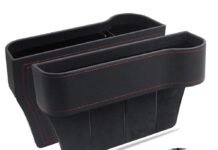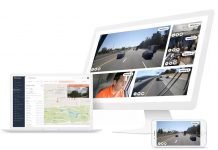Stop us if you’ve heard this one before. You’re at a stop light at an intersection minding your own business. The light turns green, and the car next to you revs their engine to full throttle, tattooing the asphalt with tire skids as they spin and screech. Smoke blossoms in your eyeline as the vehicle darts away, hitting 40…50…60. It has practically disappeared from the horizon before you even clear the intersection.
Why do people drive like this? That’s a question better suited for someone with a degree in psychology.
Instead, let’s examine what driving like this does to a car. The short answer? Nothing good. The typical vehicle isn’t designed to perform burnouts and similar acts of hard driving. Even the vehicles that are deemed “high performance” will eventually malfunction if driven too hard for too long.
The following breaks down some of the most common examples of hard driving and the potential consequences. Keep these in mind when shopping for new cars for sale in Houston. These tips may just help you extend the life of your vehicle and save you some money.
#1 – Burnouts/Peeling Out
A good rule of thumb to follow – if the way you’re driving a car causes the tires to smoke, then you should probably avoid doing that. Nothing takes the tread off your tires faster than performing burnouts. They also push your engine and drivetrain to perform in a way they aren’t meant to.
Oh, and let’s not forget burnouts are illegal on virtually every public street in the country. Trust us, you don’t want to get hit with a reckless driving charge.
#2 – Slamming on the Brakes
Slamming on your brakes – especially at high speeds – is asking your car to do a lot in a short amount of time. The average car weighs about 4,000 lbs., so just imagine what it takes to go from 70 mph to zero within a couple seconds.
Brake slamming may result in flat-spotting, which is when tires lock up and skid forward on the road. Slamming your brakes also damages the brakes themselves. Specifically, the brake pads will wear down faster and the suspension and rotors are more likely to malfunction prematurely. Further, the act of slamming on your brakes may potentially knock your vehicle’s driveshaft out of position, which is the part that connects the wheels to the engine.
Always use best practices when braking. Stopping should be gradual – never abrupt – and you should always keep enough distance between yourself and the car in front of you so that you don’t have to slam your brakes.
Carrying or Hauling Too Much Weight
Vehicles perform at their best when they aren’t challenged by factors such as steep uphill roads, driving on old tires, and, of course, weight. By overloading your vehicle with heavy supplies, you’re putting strain on the vehicle that requires your engine to work harder and causes your tires to wear out faster.
More dangerous than carrying too much weight is hauling too much weight. Automobile manufacturers thoroughly test their vehicles to determine towing capacity. By exceeding a vehicle’s towing capacity, you’re putting additional strain on the transmission and engine, wearing down your brakes and tires, and potentially warping the chassis.
Further, it is extremely dangerous to drive with a load that exceeds the vehicle’s towing capacity. The ability to brake, maneuver, and accelerate are all compromised, which greatly increases the likelihood of being in an accident.
Best Practices to Employ When Operating Your Vehicle
Hard driving and aggressive driving practices put a strain on your vehicle’s most important equipment and components. This means you may need to prematurely change your tires or get your vehicle serviced more often than normal to keep it in acceptable condition. It’s also worth noting that certain vehicle warranties can be voided if it’s discovered the vehicle was used to perform burnouts and other unsafe practices.
Beyond doing damage to the vehicle itself, hard driving increases the risk of harming yourself or others in an accident. This, of course, leads to an array of legal troubles that will have long-term effects on your driving privileges and insurance premiums.
When driving, use the following best practices:
- Always follow the posted speed limit.
- Do not let yourself get distracted.
- Give the cars around you the proper amount of space.
- Always signal before changing lanes or turning.
- Wear your seat belt.
- Never drive on bad tires.
- Never overload your vehicle.
- Never tow anything beyond your vehicle’s towing capacity.
- Never drive under the influence of drugs or alcohol.
- Always drive defensively.
By following best practices while driving and refraining from hard driving, motorists mitigate the risk of damaging their vehicles, incurring tickets and fines, and being involved in accidents. A good way to get familiar with what your vehicle can and can’t do is by taking the time to read the manual. Once you’re educated on your vehicle’s limitations, you’ll be much less likely to exceed them.












